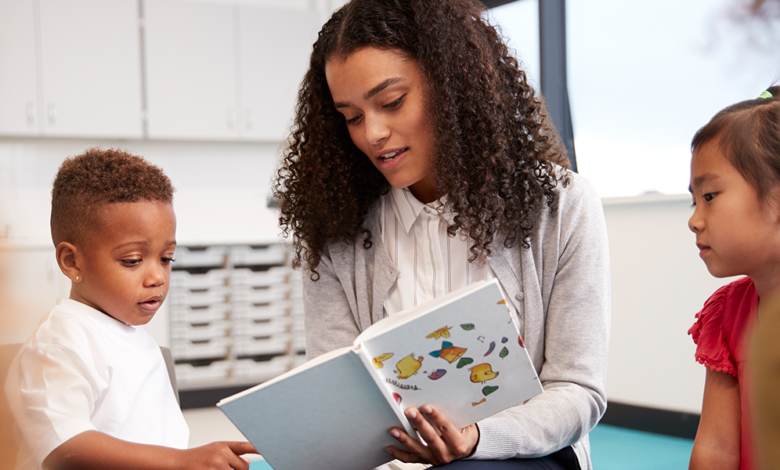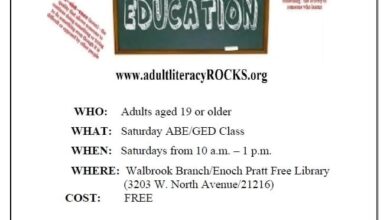
Children from Low-Income Families are Falling Behind in Literacy During the Pandemic
By Maya Pottiger | Word In Black
(WIB) – Teresa McDowell was around 5-years-old when she got hooked on reading.
She was at her grandmother’s house, bored, and noticed a shelf of books. Her grandmother worked in the evenings as a janitor at a library. Having grown up in the Jim Crow-era South, she did not believe in throwing things away and would bring home old books the library discarded.
Just paging through this selection, looking at the pictures, and trying to construct a story, McDowell began engaging with literacy.
Now, as a student support specialist in a northern Ohio school district, she works with students who need extra help reading. Since the pandemic, she has noticed a decline in reading levels, especially when it comes to students in low-income families.
“It’s impacted students’ reading abilities,” McDowell says. “When we came back into the classroom this year, there was some regression in their reading.”
Literacy is a word thrown around in education settings that can mistakenly be interchanged with reading. But literacy encompasses so much more: comprehension, how letters work in a word, how words work in a sentence.
“It’s really a bank of foundation skills that helps undergird being able to learn to read,” says Dr. Helen Bond, an associate professor of curriculum and instruction at Howard University’s School of Education. There’s also the larger concept of multi-literacy, Bond says, which includes digital and health literacies.
McDowell teaches the concept to her students using a house as an analogy: to construct a house you need a strong foundation in order to build it up. And it’s crucial to build this foundation in the kindergarten through third grade frame because, as the saying goes, you learn to read in K-3, and from then on, you’re reading to learn.
When we came back into the classroom this year, there was some regression in their reading.
Data shows that students who aren’t “highly proficient” in reading by the end of third grade have a higher likelihood of dropping out of school, Bond says, and we don’t yet know how it will play out with children who have lived through the “disruption and trauma” of the pandemic.
In a July 2021 report, the Black Education Research Collective at Columbia University found that around 45% of participants were “extremely” concerned about the academic progress of Black students in the wake of COVID-19, and a little more than 30% of respondents felt that the mental health and wellness of Black students was “extremely impacted.”
“We don’t have all the data because we’re still sort of in the pandemic, moving out of it,” Bond says. “But I expect that there will be some students, especially low-income students and low-income areas, and maybe Black and Brown students, that will be impacted.”
This problem isn’t new. A well-known 2003 study found that children from lower-income families “are exposed to an astounding 30 million fewer words than children from higher-income families by the time they are 4 years old; this greatly impedes literacy development,” Kalman R. Hettleman, an education policy analyst and advocate, wrote in the Baltimore Sun.
Reading scores were already dropping before the pandemic. In its Nation’s Report Card, the National Assessment of Educational Progress found that, in grade 4, scores were lower in 2019 compared to what they were in 2017, and that only about one-third of fourth graders were meeting reading proficiency levels.
The assessment is broken up into fourth, eighth, and twelfth grades, and scores school districts nationwide on a 0 to 500 scale. For fourth graders, the average reading score in 2019 was 220, which was lower than the 222 score in 2017. However, it is a few points up from 1992, when the score was 217.
Reading Retention Laws Could Keep Kids in Third Grade
Many states around the country are cracking down on literacy and reading proficiency. At least 17 states and the District of Columbia currently have laws in place that hold students in third grade if they cannot prove reading proficiency by the end of the school year.
“The question is how much has the pandemic disrupted the learning to read cycle in the first, second, and third grades? Is it to the degree that it’s going to cause certain students in certain states to have to be retained?” Bond says.
Though she obviously acknowledges the importance of reading, she worries these strict constructs could lead to increases in students dropping out.
“That legislation can be very problematic for Black and Brown children, as well as people going through a trauma, like the pandemic,” Bond says. “It could really play out in not a good way.”
Legislation that “doesn’t take into account the inequities in the greater society” and the roles the inequities play — racism, discrimination, under-resourced schools — keeps Bond up at night.
“The legislation is largely unfunded,” Bond says, noting that it doesn’t allocate resources to schools or parents. “It’s not taking in the inequality, the discrimination, and all the other factors that play into being a proficient reader by third grade.”
Experts Say Literacy Should Be Introduced Early On
So what can you do to keep your child on track? Experts say families need to start before kindergarten.
“We are always trying to get our parents to be engaged in their child’s education and their reading as much as we can because we all know it takes a village to raise a child,” McDowell says. “We need parents’ input just as much as the institution of education.”
Touching on the oppression formerly enslaved people faced, McDowell says the ideology of reading being banned has been passed down through generations. She was surprised one day in college when pregnant classmates were talking about reading aloud to their in-utero babies.
“That became a revolution to me,” McDowell says. “This is what we need to do, as all human beings: start that literature at the point of conception because we now know that [the stages of] brain development.”
That legislation can be very problematic for Black and Brown children, as well as people going through a trauma, like the pandemic
Bond says it boils down to 20 minutes of reading every day, along with keeping your child engaged in what they’re reading.
“It’s reading to your children, talking to your children about what they read, asking questions,” Bond says. “Then, by the time they get to kindergarten, they’ve got this literacy foundation that helps being able to be a proficient reader.”
As for McDowell, when she thinks back to the time she spent exploring her grandmother’s collection, she says she can see now the impact and importance of those moments of boredom — moments where she was surrounded by books.
“It gave me a heads up,” McDowell says. “After that point, I was always a good reader.”
Support for this Sacramento OBSERVER article was provided to Word In Black (WIB) by the Chan Zuckerberg Initiative. WIB is a collaborative of 10 Black-owned media that includes print and digital partners.
The post Children from Low-Income Families are Falling Behind in Literacy During the Pandemic appeared first on The Sacramento Observer.










